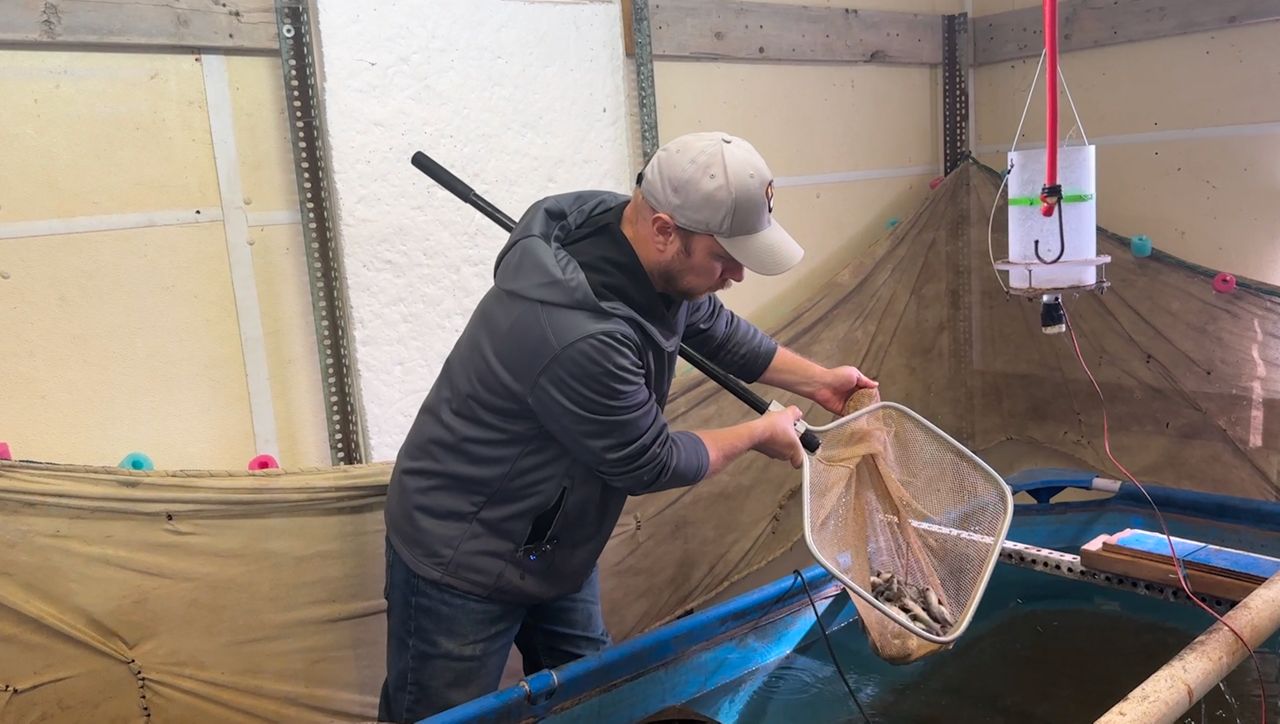STOUGHTON, Wis. — Fish farms in Wisconsin are focused on raising fish species like walleye and yellow perch starting as young fingerlings to make sure there is a sufficient supply at restaurants.
One of the fish farmers working on that is Peter Shep. He is the owner of Mulberry Aquaponics and Hatchery in Stoughton, Wisconsin.
Every day, Shep feeds thousands of yellow perch fingerlings at his fish farm. They were spawned in the spring. Shep said they will be sold off before winter.
“Before we close up shop, everything will be used for broodstock, so we put all of our efforts into the parent fish of these fish,” said Shep.

There are two mechanisms that keep the fingerlings and the broodstock alive. The first is lower-powered pumps, which keep the water circulating. The second is bio-filters which remove harmful bacteria and create a more natural environment inside the fish tank.
“The water can get a little bit brown,” said Shep. “It can get a little bit dirty but if you are not nitrifying the harmful components which are ammonia and nitrate, the fish won’t last for more than a couple days.”
Shep said he is a tier one fish farmer. This means he is responsible for raising the fingerlings at the earliest stages of life when their chances of survival are at their lowest.

That is different from tier two fish farmers, who raise the fish when they are older to be sold to a market or restaurant. Shep said that’s why there are not many fish farmers of his type.
He said one of his biggest challenges in fish farming is lack of available labor. That’s part of why he has partnered with Wisconsin Sea Grant, to attract students in the Milwaukee and Madison areas that are interested in fish farming.
“It helps to show the younger generation the technical aspects of fish farming and it gives them a little bit of foundation for nurturing that knowledge,” he said.
Shep said he hopes he can continue to boost fingerlings production to help provide more of the product that eventually makes it to your plate.



